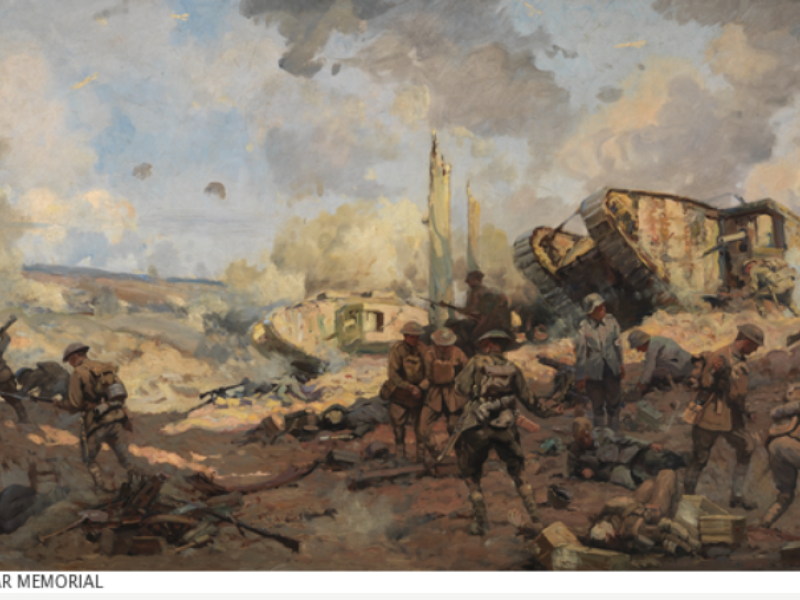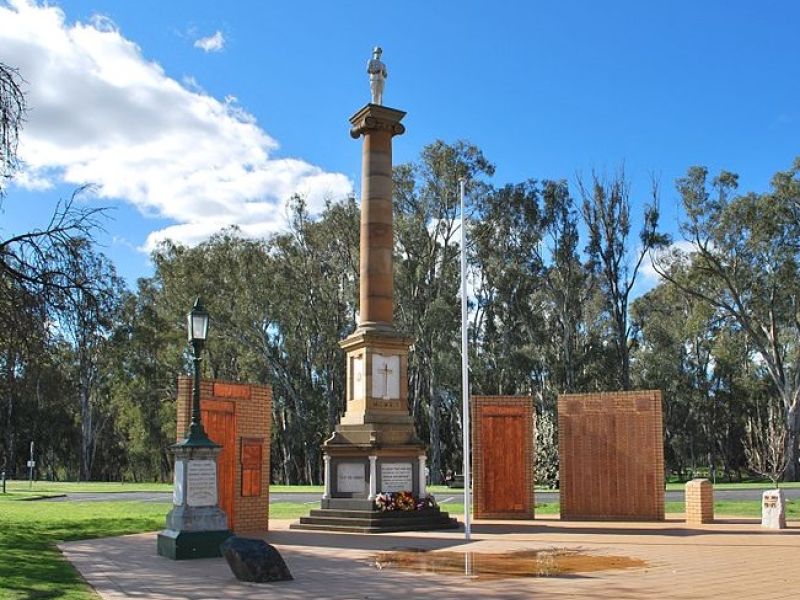Private Alfred Anders, 2nd Machine Gun Battalion, AIF
Alfred Anders was born in 1890, the youngest son of Charles and Ellen Anders of Moama, Victoria. His father, a violent drunk, eventually deserted the family when the children were small. Alfred went to Echuca State School, and became a butcher in the district.
In 1913, Alfred Anders married Agnes Thompson from Balranald, and had a daughter, Alvie. Sadly, Agnes contracted typhoid fever and died in February 1915, leaving Alfred a widower with a nine-month-old baby. Perhaps overwhelmed by his loss, two weeks later Alfred left Alvie with his mother and enlisted in the Australian Imperial Force.
He embarked in May 1915 with reinforcements to the 23rd Infantry Battalion. In Egypt, his older brother Arthur transferred to Alfred’s battalion, and they went onto Gallipoli together.
In late October, Arthur was wounded in the leg and evacuated to hospital. Alfred transferred to the 6th Machine Gun Company and was sent to France.
Alfred’s first experience of the Western Front came at Pozieres in July and August 1916.
He later wrote, “myself and other gunners were in a small dugout, when a 5 foot 9-inch high-explosive shell hit the roof and away it went. A dull thud, a bright red flash, blue stars, smoke and dust, and broken timber hitting our steel hats, was the sensation we got. It seems marvellous that not one of us was hit at all, for if the shell had hit the end or gone through the roof without bursting, we would have been blown to atoms.”
After Pozieres, they were sent to Belgium to recover and Arthur joined Alfred in the 6th Machine Gun Company in October 1916.
Back at the Somme, Arthur was sent forward with the 7th Brigade’s attack on Bayonet Trench. Private Arthur Anders was killed with four others in shell-fire while waiting to be relieved. Alfred tried to bury his brother’s body but the shell-fire was too heavy.
Alfred wrote home, “It is a consolation to know that he suffered no pain, and that he could not have died a more noble death than to the cause of right and freedom. It is the will of the Lord, and we must abide with it at all times.”
Alfred Anders spent much of 1917 in hospital with knee problems and a shell injury. He finally returned in April 1918 to the 2nd Machine Gun Battalion. They fought in Amiens in August and in September, were in regular rotation pushing the Germans back to the Hindenburg Line.
During these encounters, Private Alfred Anders was shot in the abdomen. He was carried out to the 41st Casualty Clearing Station, where he died of his wounds on the 4th of September 1918. The war ended just five weeks later.
Alf Anders was buried at Heath Cemetery, Harbonnieres, under the words “There is a link death cannot sever; fond remembrance clings forever.” His brother is buried 30km away with the same epitaph.
Meleah Hampton, Historian, Military History Section
Image: Breaking the Hindenburg Line. Artist: Will Longstaff, 1918

 Australian War Memorial
Australian War Memorial